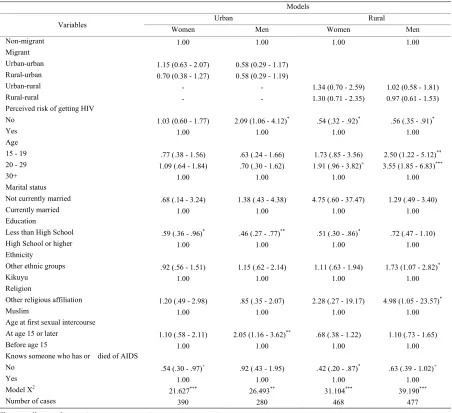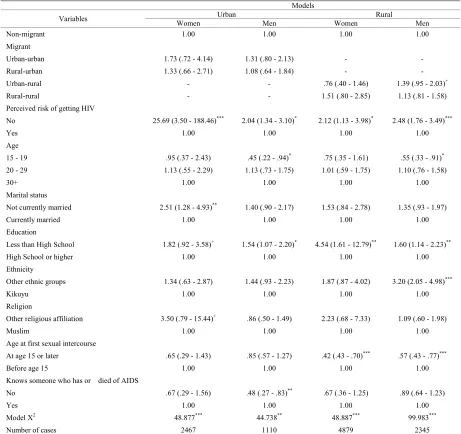Migration, Sexual Behavior and Perceptions of Risk: Is the Place of Origin a Factor in HIV Infection?
Full text
Figure




Related documents
From the present study, it can concluded that the comparison of 2G and 4G mobile phone radiation indicated the 4G mobile phone radiation induced in saliva samples
The International Accounting Standards (IAS) 41 Agriculture of the EU relies on fair value accounting (FVA), which is enabled here by the relatively new forest
Efforts generated via a GLMM and a GLM for both homoscedastic and heteroscedastic models showed that although each data set was heteroscedastic, the severity of
In January, 1960 a report by Haddow and Homing2 extended the observations of Richmond. They studied the effects of re peated injections of iron-dextran subcu taneously as well
The global financial crisis brought about a swing on the aspect of liquidity finances that put NBFC’s in India in quite a confusing position. While many had the means
The proposed antenna delivers high return loss and bandwidth where a single antenna can used for Tri-band application.The proposed design has the capability to work
To verify the tuning effects of such a feed structure, a simple slot antenna built on a FR4 board was simulated in CST shown in Figure 3(a).. The original design shows the slot is
Al articular la ecología política con la economía ecológica teniendo por base el análisis del metabolismo social, Martinez-Alier (2002) suministra una importante base teórica

